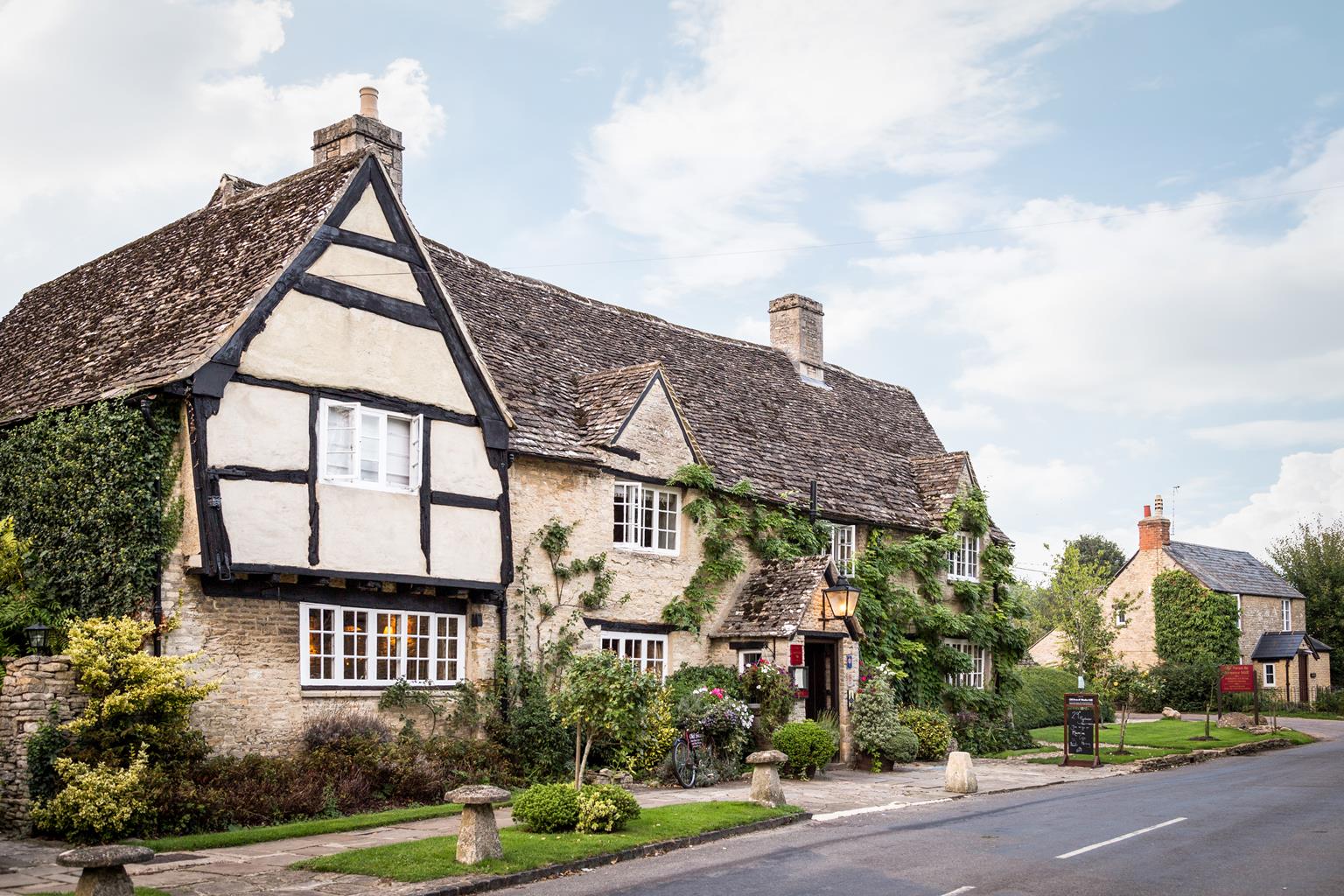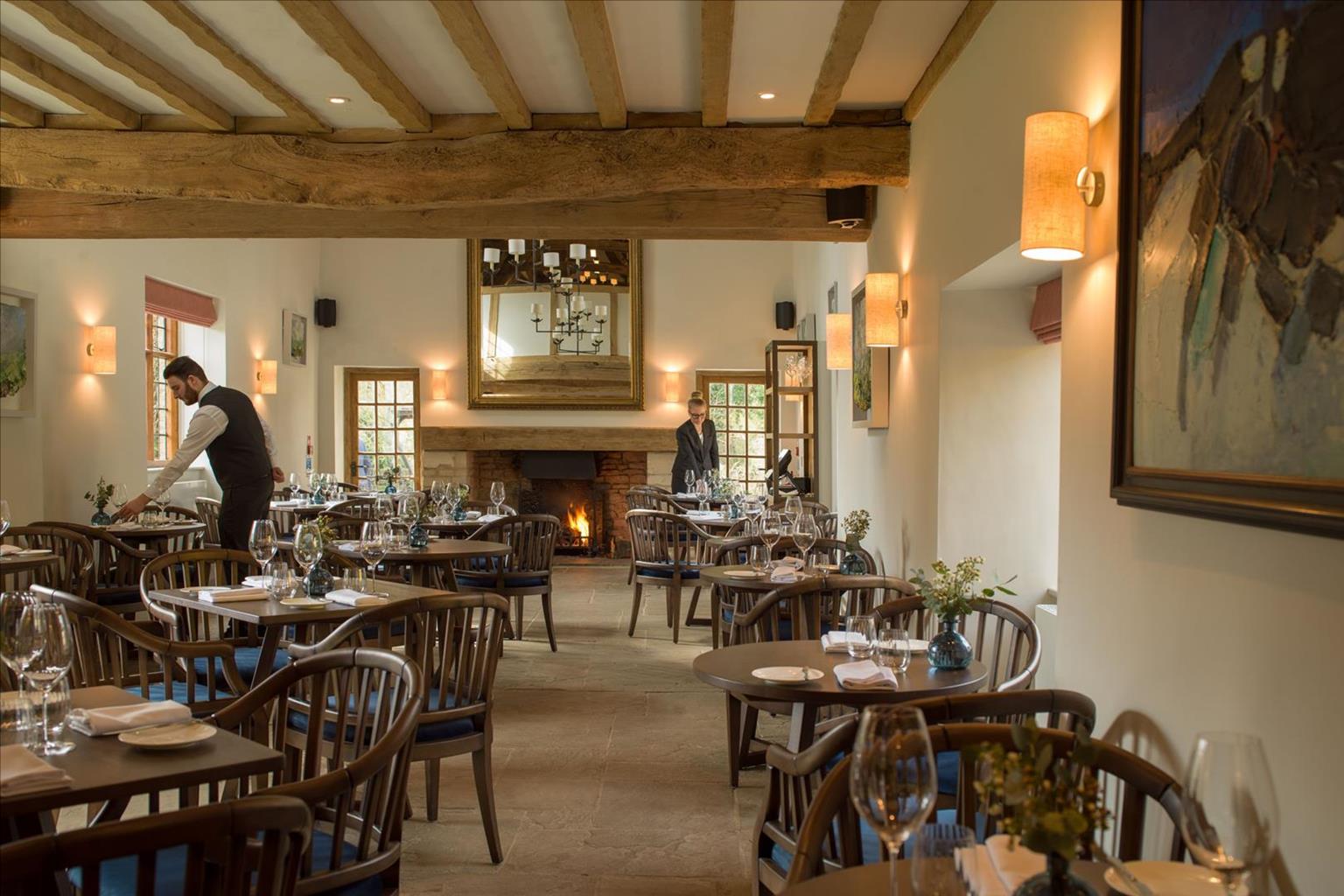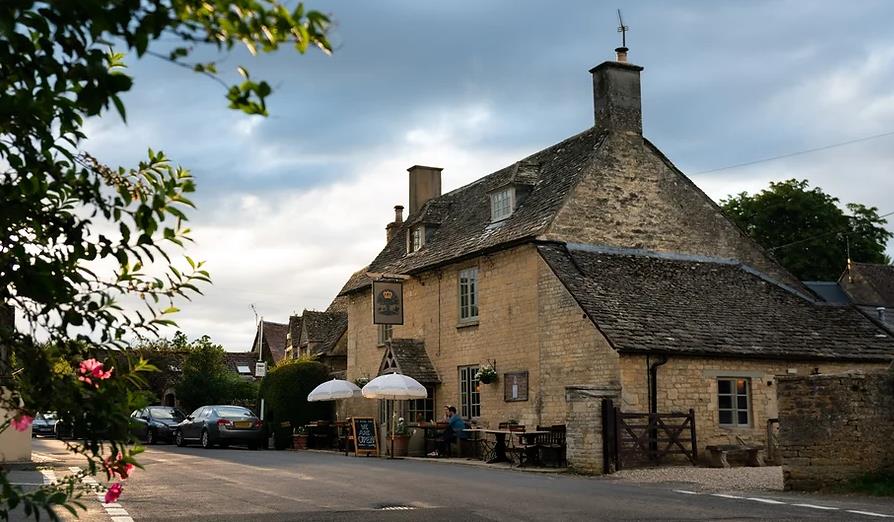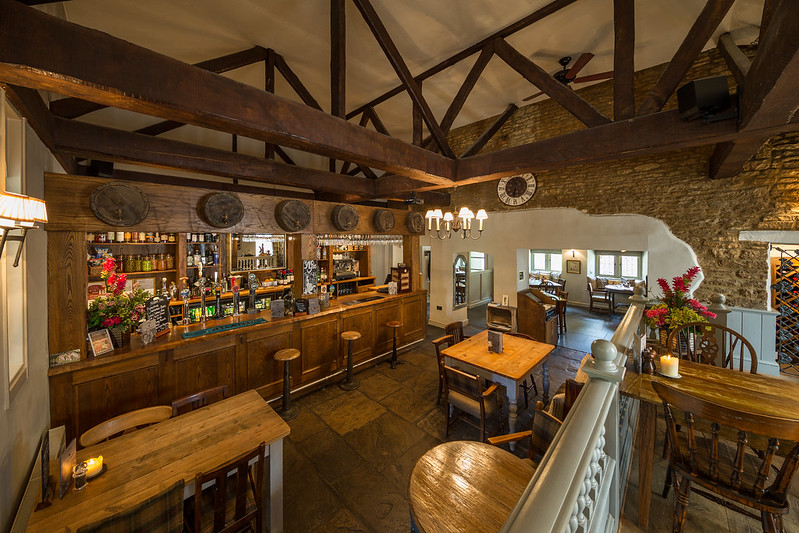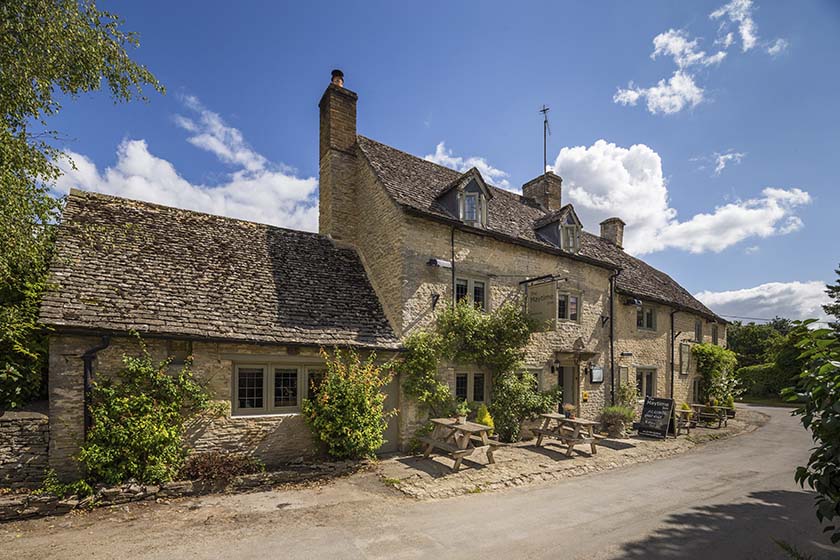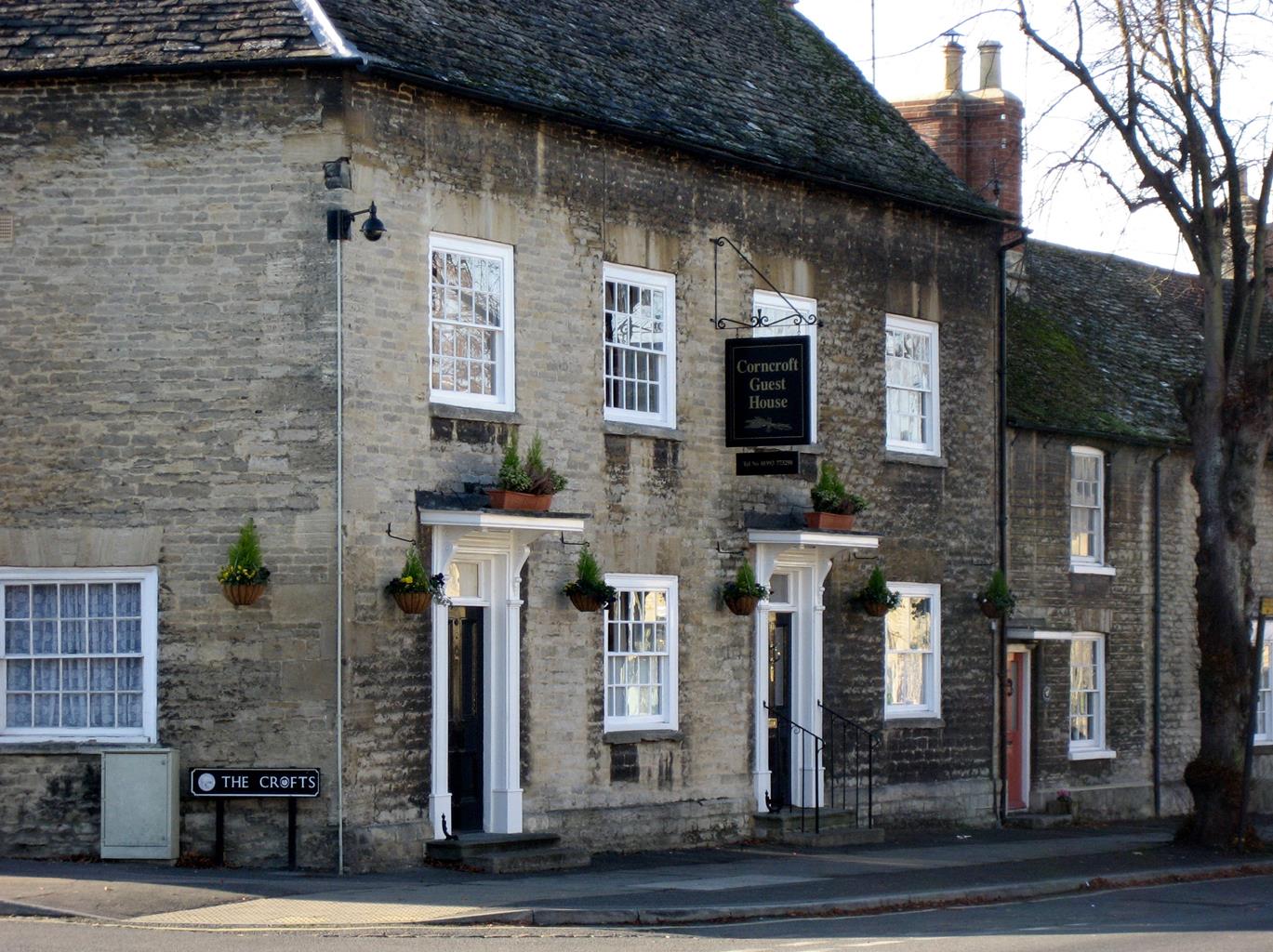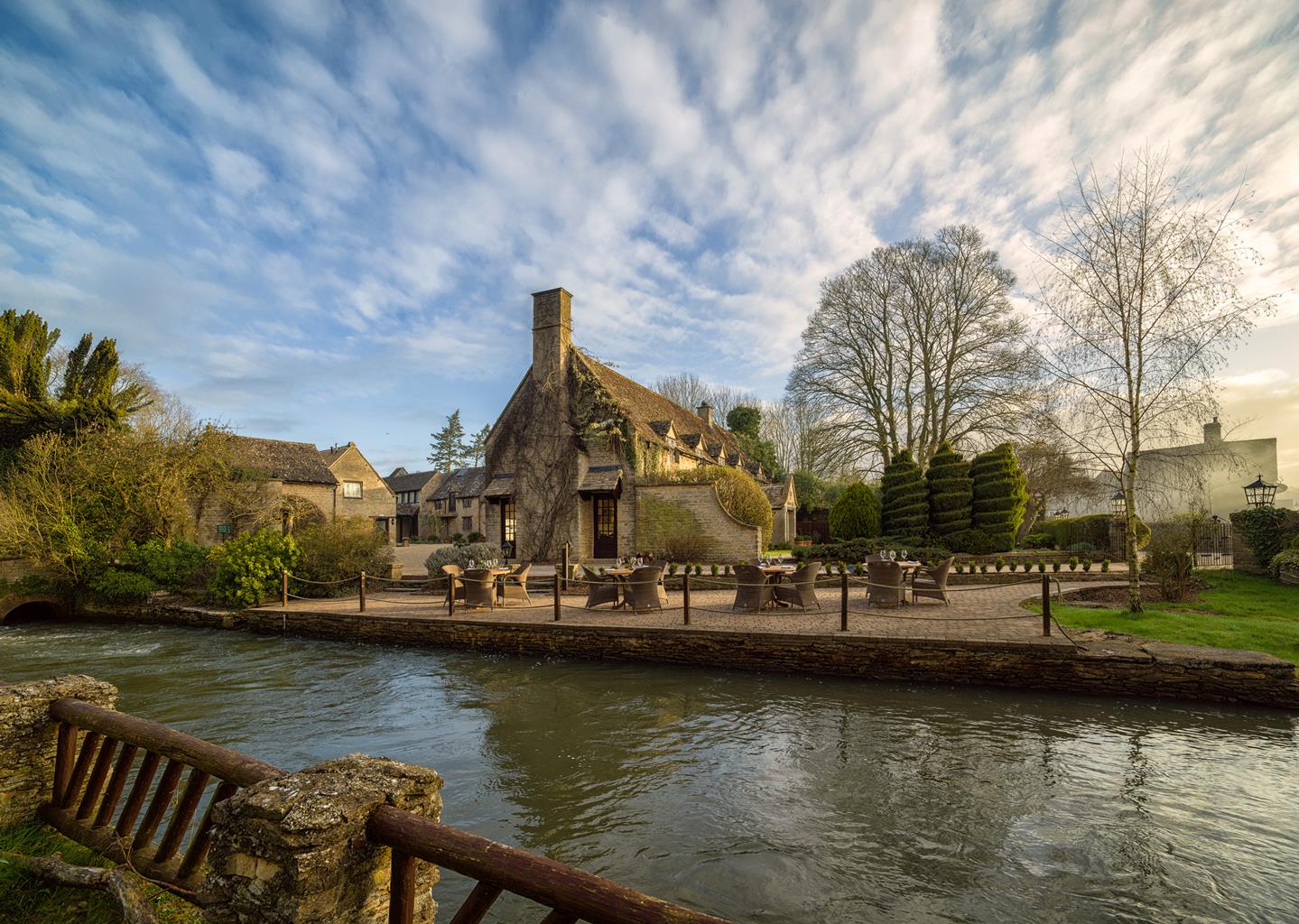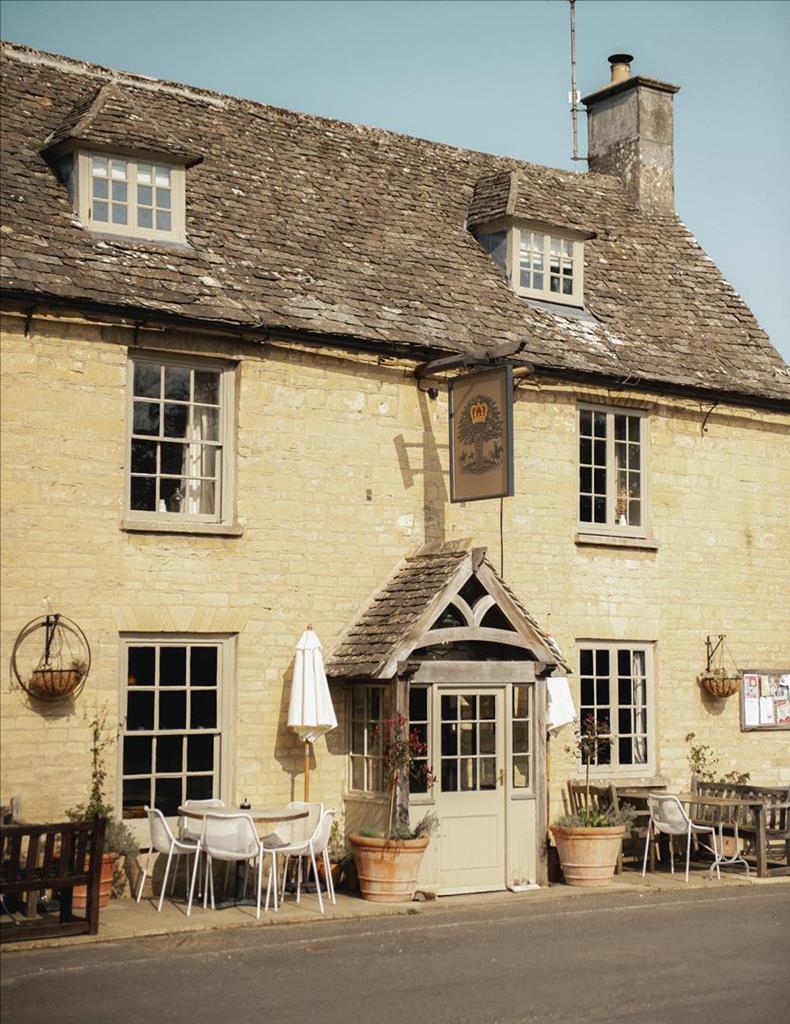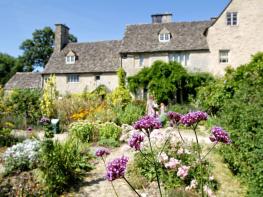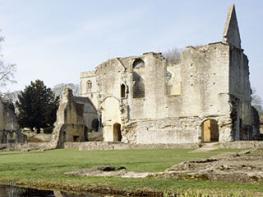Located in the quieter end of town, yet close to the centre, Corncroft Guest House offers…
Witney – from town to country

3.5 miles (5.7kms)
About the walk
Unlike Burford and Broadway, Witney never established itself as a Cotswold honeypot. Perhaps it is just as well. It is a place to stumble on, to be discovered without the fuss of coach parties and souvenir hunters. Stroll through its picturesque streets and you’ll find a great deal of charm and character. It is attractive without being twee, smart without being ‘touristy’. In short, it is classic Middle England. One of Witney’s best views is from Church Green, looking across to the parish church at the southern end. This quiet corner of the town has the feel of a small English cathedral city and if Witney were ever descended upon by tourism marketing men, the focus of their attention would surely be here. Perhaps the main reason the town never became a major attraction is its industrial past. During the Middle Ages Witney became the centre of a thriving woollen trade. It was the famous Cotswold sheep and the meandering River Windrush that contributed to the town’s success – the river proved to be eminently suitable for the scouring of the woollen cloth. Fortunately, the townsfolk knew how to yield the best from these attributes and in later years Witney became famous throughout the world for producing blankets.
It was in 1669 that Richard Early apprenticed his teenage son, Thomas, to the woollen trade. The boy lived up to his father’s expectations and by 1688 he was one of the town’s leading master weavers. indeed, he was so successful that he was chosen to present a pair of gold-fringed blankets to James II. In 1711 the Witney weavers were granted a charter to form a Company of Blanket Weavers. This significant development, though long overdue, was welcomed by the district’s weaving community, and weavers operating within a 20-mile (32km) radius of the town were required to bring their blankets to the company’s headquarters to be inspected and hallmarked.
Thomas Early became the first master of the company and in later years the Early family presented blankets to King George III and Queen Charlotte as part of their royal visit to Oxfordshire in 1788. However, it wasn’t long before the Industrial Revolution got under way and the wind of change began to blow through Witney, as innovative machinery ushered in a new era in the manufacturing industries. The traditional weavers feared for their jobs and riots broke out in the streets. But it was to no avail – in spite of all the protests, the new order was here to stay.
In 1960 Witney’s two major blanket manufacturers merged, consolidating an association already forged by marriage between the families. With the eventual closure of the company, Witney’s tradition for producing blankets now lies at the core of the town’s industrial heritage.
Walk directions
Turn right into Langdale Gate and walk towards the Butter Cross. Turn left before it and walk down Church Green, passing The Fleece. Have a look at the Bishop’s Palace and visit St Mary’s Church next door. With your back to the church, continue along the left side of Church Green and turn left at the Butter Cross into Corn Street. Keep ahead and turn left just beyond the Three Horseshoes pub into The Crofts. Follow the road between stone houses.
Follow The Crofts to the left and turn right at the end to pass the Wychwood Brewery. Keep a low stone wall on the left and walk straight on to St Mary’s Court. Continue ahead along an alleyway, with the spire of St Mary’s on the left and, when you reach the corner of a recreation ground, keep to its right edge, passing a toilet block. Bear left through The Leys past the splash park. Turn right at the road, cross at the pedestrian lights then turn first left into Station Lane Industrial Estate Avenue Two.
Follow the road through an industrial estate and take the path at the end, beneath the A40. Walk ahead through a gate. The walk now cuts between Witney Lake and surrounding meadows. Continue along the lakeside path. Keep Emma’s Dike right and curve to the left. On the right is the River Windrush. Make for a large concrete bridge and cross it, branching left to go through a kissing gate.
Keep the field boundary over to your left, look for a gate and follow the path to a kissing gate by the A40. Pass under the road to another kissing gate and head north to a kissing gate, keeping your back to the main road. Cross over, go through two more gates, and keep ahead with office buildings seen on the left. At the far end of the field go through two gates. Keep ahead, passing to the right of a dilapidated mill and go through a gateway. Follow the path between margins of vegetation and eventually you reach a footpath to Cogges Manor Farm Museum.
To visit the museum, turn right and follow the path and adjoining cycleway to the Priory and St Mary’s Church. Continue to the adjoining museum and then retrace your steps, heading now for Witney town centre. Pass an electricity sub station on the right and walk along to the roundabout. Cross over into Langdale Gate and return to the car park.
Additional information
Pavements, meadow and waterside paths
Urban, country park and waterside on town outskirts
Busy streets at start and finish. Under control or on lead in Witney Lake and Meadows Country Park
OS Explorer 180 Oxford, Witney & Woodstock
Public car park by Woolgate Shopping Centre, off Witan Way
Woolgate Shopping Centre, recreation ground and Cogges Manor Farm Museum (for visitors)
WALKING IN SAFETY
Read our tips to look after yourself and the environment when following this walk.
Find out more
Also in the area
About the area
Discover Oxfordshire
Located at the heart of England, Oxfordshire enjoys a rich heritage and surprisingly varied scenery. Its landscape encompasses open chalk downland and glorious beechwoods, picturesque rivers and attractive villages set in peaceful farmland. The countryside in the northwest of Oxfordshire seems isolated by comparison, more redolent of the north of England, with its broad views, undulating landscape and dry-stone walls. The sleepy backwaters of Abingdon, Wallingford, Wantage, Watlington and Witney reveal how Oxfordshire’s old towns evolved over the centuries, while Oxford’s imposing streets reflect the beauty and elegance of ‘that sweet city with her dreaming spires.’ Fans of the fictional sleuth Inspector Morse will recognise many Oxford landmarks described in the books and used in the television series.
The county demonstrates how the strong influence of humans has shaped this part of England over the centuries. The Romans built villas in the pretty river valleys that thread their way through Oxfordshire, the Saxons constructed royal palaces here, and the Normans left an impressive legacy of castles and churches. The philanthropic wool merchants made their mark too, and many of their fine buildings serve as a long-lasting testimony to what they did for the good of the local community.
Nearby stays
Restaurants and Pubs
Nearby experiences
Recommended things to do
Why choose Rated Trips?
Your trusted guide to rated places across the UK
The best coverage
Discover more than 15,000 professionally rated places to stay, eat and visit from across the UK and Ireland.
Quality assured
Choose a place to stay safe in the knowledge that it has been expertly assessed by trained assessors.
Plan your next trip
Search by location or the type of place you're visiting to find your next ideal holiday experience.
Travel inspiration
Read our articles, city guides and recommended things to do for inspiration. We're here to help you explore the UK.

